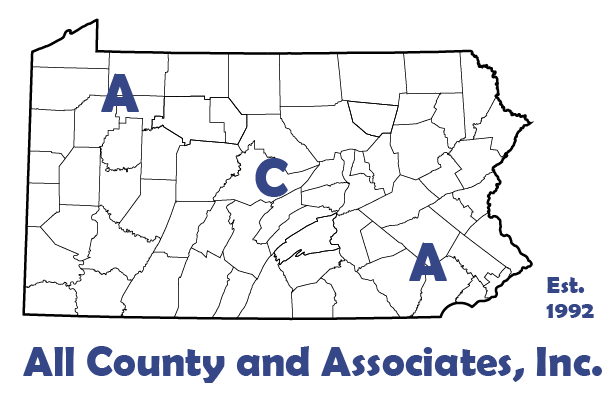
All County and Associates, Inc. is proud to announce the launch of our Homeowner’s Guide to On-Lot Sewage Systems. We developed the guide, built on the concept of Helping You Make Informed Decisions. So, if you are a homeowner, looking at a property or a real estate professional, this guide will help you.
The document is available at: https://all-county-assoc.com/wp-content/uploads/2020/07/Homeowner-Guide-to-On-Site-Sewage.pdf
Nearly 60 million Americans relying on on-lot sewage systems. While approximately one-third of new construction incorporates them. With so many systems, proper usage and maintenance is important to prevent impacts. Today, one-quarter of all systems are in some stage of failing, that is 15 million systems. While approximately 10%, or 6 million systems are in total failure. These failures are not cheap either, with an average replacement cost of $35,000. With this in mind, let’s take a look at three key ways to maintain a system:
Watch Your Drains
What goes down the drain has major impacts on how well a system works. Some items like coffee grounds, grease and feminine hygiene products can clog a system. Others like household chemicals, paint and gasoline can kill the anaerobic microbes. These are important to breaking down the solid waste.
Maintain Your Drainfield
The drainfield is a vital component of a sewage system. It is where aerobic microbes in the soil, treat the effluent. From there it enters the groundwater table. Protecting it is vital to maintaining functionality of a system. Other than watching your drains, there are three ways to maintain a drainfield:
- Avoid planting trees and shrubs nearby. Plant roots can damage the network of pipes that drain effluent to the soil.
- Do not drive or park on the drainfield. Vehicles produce heavy point loads on the soil. These loads can lead to compaction, damage lines and reduce percolation rates.
- Prevent flood of the drainfield with rainwater. Ensure downspouts, sump pumps and foundation drains are not directed toward the drainfield. They can oversaturate the soil.
Inspect and Maintain
The best way to maintain a system is by routine maintenance. This maintenance should include an inspection by a certified Sewage Enforcement Officer. Maintenance should occur with a tank pumping at least of every three years. Additionally, mechanical components like floats, pumps and alarms should occur more often. Some of these components need inspection at least annually.
Who is ACA?
Started in 1992 and located in Chester County, PA ACA has grown to become a full-service civil engineering firm. Today, we merge professional services with practical knowledge for residential and commercial projects. No matter the scale, from installing a fence, to building a structure or developing land, you need permits. Because the approval process includes many permits and agencies, it can be a headache. Working with ACA’s full-service team saves you time, money, and headaches. Every step of the way, we are here to support you and educate you about the process. Here are some of the basic services we provide:
Construction Management | Civil Engineering | Environmental Permitting | Septic System Testing and Design | Land Surveying | Wetland Delineations and Mitigation
Please feel free to browse our website or if working on a project or need help, contact us at (610) 469-3830.


